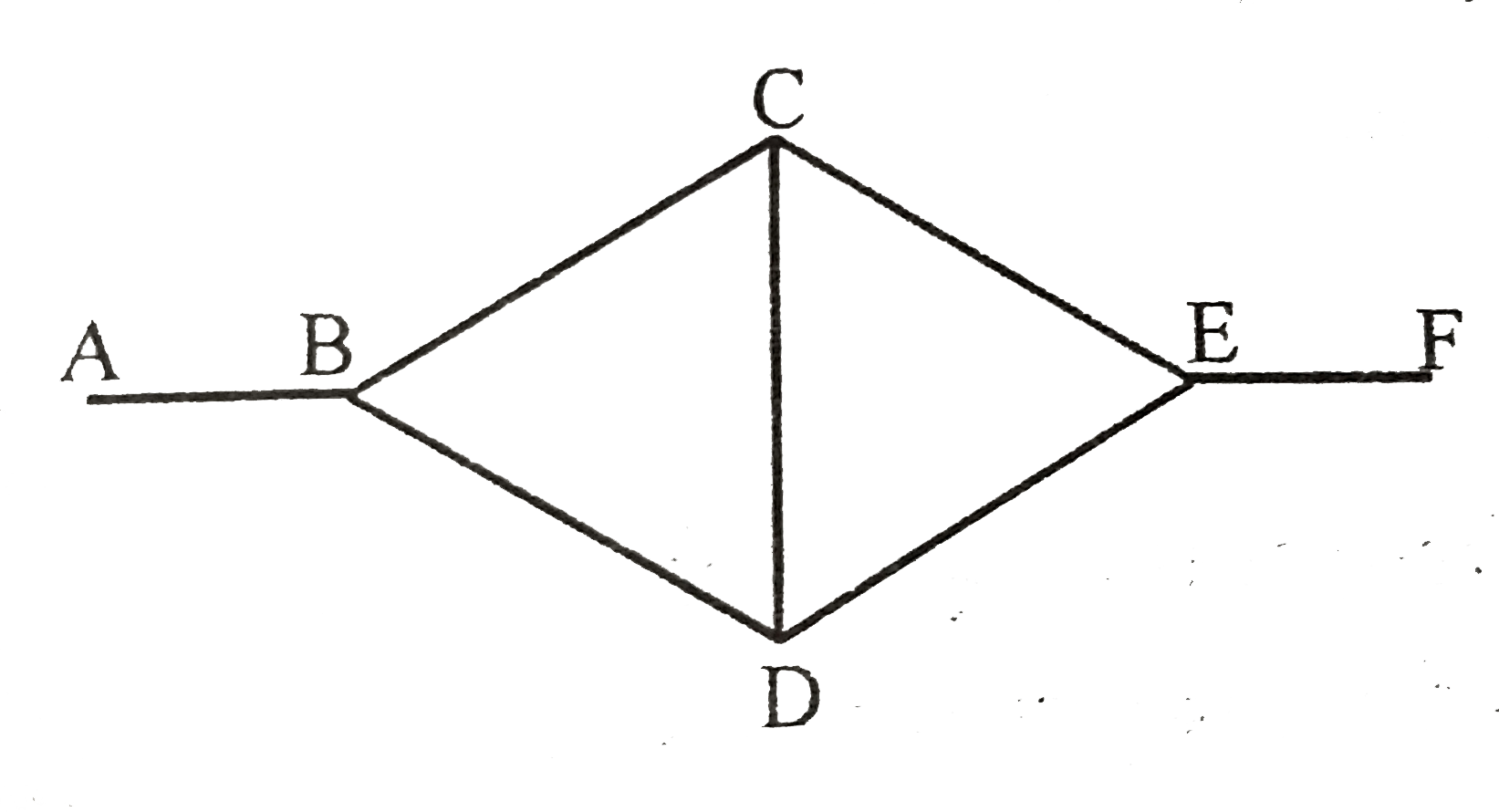The two ends of a metal rod are maintained at temperatures 100∘C and 110∘C. The rate of heat flow in the rod is found to be 4.0 Js−1. If the ends are maintained at temperatures 200∘C and 210∘C, the rate of heat flow will be : Solution in Gujrati
16.8 Js−1
8.0 Js−1
4.0 Js−1
44.0 Js−1
The correct Answer is:C
From H=kA(T1−T2L),
(i) H1kA(110−100L)
H1=10kAL
(ii) H2=kA(210−20L)=10kAL
∴H1=H2
∴ Js−1=H2
Topper's Solved these Questions
- THERMAL PROPERTIES OF MATTERBook:KUMAR PRAKASHANChapter:THERMAL PROPERTIES OF MATTERExercise:Section - F Question from Module (Sample questions for preparation of competitive exams)
Explore 18 Videos
- THERMAL PROPERTIES OF MATTERBook:KUMAR PRAKASHANChapter:THERMAL PROPERTIES OF MATTERExercise:Question Paper (Section - A) Answer following in one sentence : (Word limit of answer is 10) (Each question carries 1 mark)
Explore 6 Videos
- THERMAL PROPERTIES OF MATTERBook:KUMAR PRAKASHANChapter:THERMAL PROPERTIES OF MATTERExercise:Section - D NCERT Exemplar Solution (Long Answer Type Questions )
Explore 8 Videos
- SYSTEMS OF PARTICLES AND ROTATIONAL MOTIONBook:KUMAR PRAKASHANChapter:SYSTEMS OF PARTICLES AND ROTATIONAL MOTIONExercise:SECTION-F (SECTION-D) QUESTIONS PAPER
Explore 1 Video
- THERMODYANMICS Book:KUMAR PRAKASHANChapter:THERMODYANMICS Exercise:Question Paper
Explore 11 Videos
Similar Questions
In . . . .. process, gravitation is necessary for transfer of heat energy.
View SolutionGive SI unit of heat current.
View SolutionWe would like to prepare a scale whose length does not change with temperature. It is proposed to prepare a unit scale of this type whose length remains, say 10 cm. We can use a bimetallic strip made of brass and iron each of different length whose length (both components) would change in such a way that difference between their lengths remain constant. If αiron=1.2×10−5/K and αbrass=1.8×10−5/K what should we take as length of each strip ?
View SolutionA rope of negligible mass is wound round a hollow cylinder of mass 3 kg and radius 40 cm. What is the angular acceleration of the cylinder if the rope is pulled with a force of 30 N? What is the linear acceleration of the rope? Assume that there is no slipping.
View SolutionWhy is a steam burn more damaging than a burn with boiling water of the same ?
View SolutionThe ends of a metal rod are kept at temperatures θ1 and θ2 with θ2>θ1. The rate of flow of heat along the rod is directly proportional to
View SolutionThe two ends of a metal rod are maintained at temperature 100∘C and 110∘C. The rate of heat flow in the rod is found to be 4.0J/s. If the ends are maintained at temperature s 200∘C and 210∘C. The rate of heat flow will be
View SolutionThe two ends of a metal rod are maintained at temperatures 100∘C and 110∘C . The rate of heat flow in the rod is found to be 4.0j/s. If the ends are maintaind at temperatures 200∘C and 210∘C, the rate of heat flow will be :
View SolutionIf the end of metal rod is heated then the rate of flow the heat does not depend on
View SolutionIn the frame shown in figure made up of metallic rods of identical size, the ends A and F are maintained at T1 and T2 respectively. The rate of heat flow from A to C is ω. If C and D are instead maintained at T1 & T2 respectively find, find the total rate of heat flow.

View Solution0.5मीटर लम्बी एक धातु की छड़ को एक सिरे पर गर्म किया जाता है। स्थायी अवस्था में छड़ के सिरों पर ताप 100∘C तथा 0∘C है,तो छड़ के तप्त सिरों से 10 सेमि दुरी वाले बिंदु पर ताप कितना होगा?
View Solutionकिसी धातु की छड़ के दो सिरों के तापों को क्रमशः 100∘C तथा 110∘C पर रखा जाता है जिससे छड़ में ऊष्मा का प्रवाह 4.0 जूल/से पाया जाता है।यदि इन सिरों के तापों को क्रमशः 200∘C तथा 210∘C पर रखा जाये तो ऊष्मा प्रवाह होगा:
View SolutionThe two ends of a metal rod are maintained at temperatures 100^(@)C and 110^(@)C. The rate of heat flow in the rod is found to be 4.0 J/s. If the ends are now maintained at temperatures 200^(@)C and 210^(@) C, the rate of flow of heat will be
View SolutionThe two ends of a metal rod are maintained at temperatures 100^(@)Cand110^(@)C . The rate of flow in the rod is found to be 4.0 J/s. If the ends are maintained at temperatures 200^(@)Cand210^(@)C , the rate of heat flow will be :
View SolutionThe ends of metal road are maintained at temperature 120°C and 150°C. The rate of heat flow in the road is to be found to be 10Js. If an identical rod is connected in parallel with this rod and ends temperature are maintained at 220°C and 250°C, then net rate of flow of heat will be
View Solution